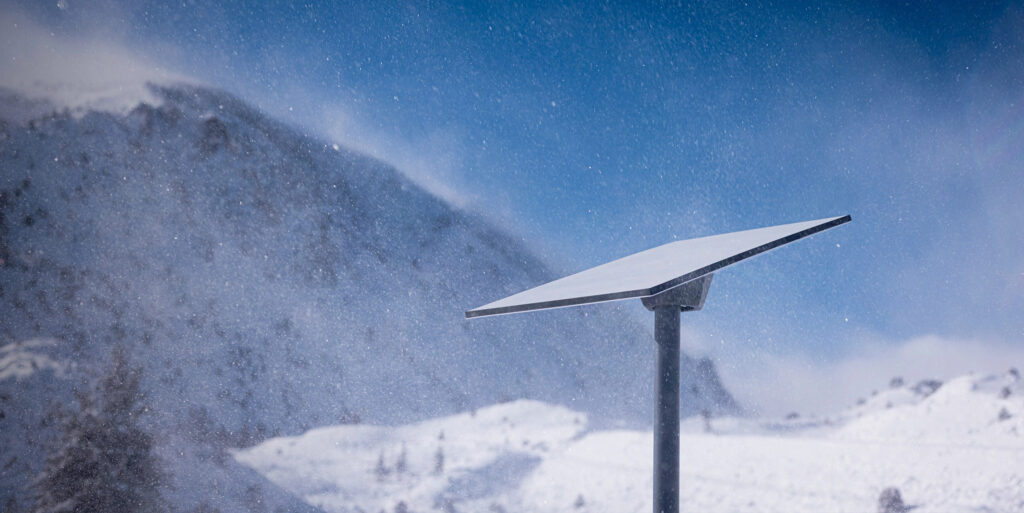The digital landscape in India is on the cusp of a significant transformation. With Starlink, Elon Musk’s satellite internet service, poised to launch in India, the promise of high-speed internet connectivity is set to reach even the most remote corners of the nation. As the third satellite internet provider, following OneWeb and Reliance Jio, Starlink’s entry is particularly significant for regions where traditional internet infrastructure struggles to deliver.
Currently, rural internet penetration stands at just 31%, a stark contrast to the 67% in urban areas. This article delves into the specifics of Starlink’s India launch, exploring its pricing, coverage, technological underpinnings, and potential impact on bridging the digital divide. If you’re curious about how Starlink could revolutionize internet access in India, especially in rural areas, this guide is for you.
At a Glance
- Starlink India Launch Date: Targeted 2025.
- Estimated Hardware Cost: ₹33,000.
- Estimated Monthly Plan: ₹3,000.
- Key Impact: Bridging the digital divide, especially in rural India.
- Regulatory Status: DoT license acquired, IN-SPACe approval expected July 2025.
- Maximum connections: 20 Lakh

Starlink’s Impact on Satellite Internet in India
Starlink’s imminent launch in India represents a pivotal moment for the country’s digital infrastructure. As the third licensed satellite internet provider, joining the ranks of OneWeb and Reliance Jio, Starlink is set to transform connectivity, particularly in remote regions where traditional internet access is limited or non-existent.
This development is crucial, considering the significant disparity in internet penetration between urban and rural areas.
Starlink India Launch: Regulatory Milestones & Entry Requirements
To understand the scope of Starlink’s arrival, it’s essential to examine the regulatory milestones and pricing structures that define its entry into the Indian market.
Regulatory Milestones
Starlink’s journey to India has been marked by several key regulatory achievements:
- Department of Telecommunications (DoT) license acquisition: Securing a license from the DoT was a critical step, officially recognizing Starlink as a legitimate internet service provider in India.
- IN-SPACe approval process: Final regulatory approval from India’s space regulator IN-SPACe in July 2025 cleared the way for Starlink to launch commercial satellite internet operations.
- Timeline for service rollout: With the necessary approvals in place, Starlink is expected to roll out its services in the coming weeks, marking a significant milestone for internet accessibility in India.
- Compliance with Indian space policies: Starlink’s operations align with the Indian Space Policy 2023, which aims to create a transparent framework for commercial satellite broadband services.

Starlink India Pricing and Hardware Costs: Pricing Structure and Plans
Understanding the cost of Starlink’s services is crucial for potential users:
- Hardware cost: The satellite dish is priced at ₹33,000.
- Monthly subscription: An unlimited data plan costs ₹3,000 per month.
- One-month free trial offer: New users can take advantage of a one-month free trial to experience Starlink’s services firsthand.
- Comparison with neighboring countries: While the pricing may seem inconsistent compared to countries like Sri Lanka, Bhutan, and Bangladesh, Starlink promises unmatched high-speed internet connectivity.
Revolutionary Technology Behind Starlink
Starlink’s ability to provide internet access to remote areas hinges on its innovative technology called the Low Earth Orbit (LEO) Satellite System.
- How LEO technology works: LEO satellites orbit at altitudes up to approximately 2,000 km above Earth, offering low latency and high bandwidth.
- Advantages over traditional internet infrastructure: LEO technology bypasses the need for extensive terrestrial infrastructure, making it ideal for areas where laying cables is challenging or cost-prohibitive.
- Coverage capabilities in challenging terrains: Starlink can provide coverage in mountainous regions, deserts, and forests, overcoming the limitations of traditional networks.
- Technical specifications and speed expectations: The LEO system beams high-speed internet directly from space, reaching locations that terrestrial networks cannot.

Infrastructure Benefits
Starlink’s infrastructure offers several key advantages:
- No dependence on terrestrial networks: Starlink operates independently of local internet infrastructure, ensuring consistent connectivity.
- Solution for mountainous regions: Laying cables across difficult terrains is costly and time-consuming, but Starlink bypasses these challenges entirely.
- Desert and forest coverage: Remote regions, including mountainous villages, desert hamlets, and forest interiors, can now have access to stable internet connectivity.
- Overcoming traditional infrastructure limitations: Starlink’s technology unlocks e-learning, remote healthcare, and digital job opportunities for millions who have never had stable internet access.
Impact on Rural India’s Digital Landscape
Starlink’s entry into India has the potential to significantly impact rural areas, where digital connectivity has long been a challenge.
Some of the persistent challenges present rural India:
- Statistics on rural internet penetration: Internet penetration in rural areas is around 31%, far behind urban rates of 67%.
- Infrastructure gaps in remote areas: Limited fiber-optic networks and slow broadband speeds exacerbate connectivity gaps.
- Economic barriers to internet access: High costs for devices and data exclude large populations from accessing the internet.
- Impact on digital inclusion: Many rural communities lack access to smartphones or computers, hindering their participation in government schemes and digital opportunities.
Transformation Opportunities
Starlink’s technology can unlock numerous opportunities for rural India:
- E-learning possibilities: Students in remote areas can access online educational resources, bridging the educational gap.
- Remote healthcare access: Telemedicine and remote consultations can bring healthcare services to underserved populations.
- Digital job creation: Stable internet access can enable remote work opportunities, boosting local economies.
- Rural business development potential: Small businesses can leverage online platforms to reach new markets and customers.
Market Competition and Partnerships
Starlink’s success in India will depend on its ability to navigate the competitive landscape and forge strategic partnerships.
Competitive Landscape
The satellite internet market in India is becoming increasingly competitive:
- Comparison with OneWeb services: OneWeb, backed by Bharti, is another key player in the satellite internet market.
- Reliance Jio’s satellite internet offerings: Reliance Jio is also expanding its satellite internet services, intensifying market competition.
- Market positioning strategy: Starlink’s strategy focuses on providing unmatched high-speed internet connectivity without dependence on local infrastructure.
- Price point analysis: While not the cheapest option, Starlink aims to offer superior reliability and speed.
Strategic Partnerships
Strategic alliances can enhance Starlink’s service delivery and market reach:
- Integration with Reliance Jio: Integrating with Reliance Jio could expand Starlink’s reach and service capabilities.
- Collaboration with Bharti Airtel: Collaborating with Bharti Airtel could further enhance Starlink’s market presence.
- Impact on service delivery: Partnerships can improve service delivery and customer support.
- Market reach enhancement: Strategic alliances can help Starlink reach a broader audience across India.
Future Outlook and Implications
Looking ahead, Starlink’s future in India holds both promise and challenges.
Growth Projections
The future looks bright for Starlink in India:
- Expected user base: ICRA reports estimate nearly 2 million satellite internet customers by 2025, reflecting strong demand.
- Coverage expansion plans: Starlink is likely to focus on expanding deeper into the underserved regions of India.
- Service improvement roadmap: Continuous technological advancements will drive service improvements and increased reliability.
- Market penetration goals: Starlink aims to significantly increase internet penetration in rural areas.
Challenges and Opportunities
Despite the potential, Starlink faces several challenges:
- Affordability concerns: High equipment costs relative to local incomes remain a barrier to adoption.
- Infrastructure development: Establishing reliable ground infrastructure is crucial for consistent network performance.
- Rural adoption rates: Encouraging adoption in rural areas requires addressing digital literacy and economic barriers.
- Digital literacy initiatives: Initiatives to improve digital literacy are essential for maximizing the benefits of internet access.

Conclusion
Starlink’s launch in India marks a significant step towards bridging the digital divide and transforming internet connectivity, particularly in rural areas. With its innovative LEO satellite technology, Starlink promises to deliver high-speed internet to regions where traditional infrastructure falls short.
While challenges remain, such as affordability and digital literacy, the potential impact on e-learning, remote healthcare, and economic opportunities is immense. As Starlink integrates with India’s telecom giants and expands its coverage, it is poised to play a crucial role in the country’s digital transformation.
The future of internet connectivity in India looks brighter than ever, thanks to the dawn of satellite internet.
Frequently asked questions
Q. Is Starlink internet available in India?
Answer: While Starlink has received crucial approvals and is actively working towards its launch, Starlink internet is not yet commercially available in India as of early August 2025. Its full commercial launch is anticipated in 2025.
Q. Is Starlink faster than 5G?
Answer: It depends on the specific circumstances. Starlink aims to provide high-speed, low-latency internet, especially in areas underserved by traditional infrastructure. In densely populated urban areas with strong 5G infrastructure, 5G might offer higher peak speeds. However, in remote or rural areas where 5G coverage is weak or non-existent, Starlink is designed to provide significantly faster and more reliable internet than any available 5G alternative. Its strength lies in its widespread availability and consistent performance across vast geographies.
Q. Will Starlink succeed in India?
Answer: Starlink has a strong potential to succeed in India, particularly in addressing the significant digital divide in rural and remote areas. Its success will largely depend on factors like competitive pricing, efficient rollout of ground infrastructure, securing all necessary regulatory approvals, and its ability to offer reliable service in diverse Indian conditions. The immense need for broadband in underserved regions presents a substantial market opportunity.
Q Is Starlink better than Jio?
Answer: “Better” depends on the user’s specific needs and location.
Jio (and other fiber/cellular providers) typically offer very high speeds and lower latency in urban and semi-urban areas where its infrastructure is robust. It’s often more cost-effective for these regions.
Starlink is designed to provide high-speed internet where traditional options (like Jio’s fiber or strong cellular signals) are unavailable, expensive to deploy, or unreliable. Its primary advantage is its global coverage and ability to reach remote locations.
Therefore, Starlink is generally “better” for rural and remote users lacking alternatives, while Jio might be “better” for urban users seeking competitive speeds and pricing from traditional broadband. They serve different primary markets.
Q. Did Starlink get a license in India?
Yes, Starlink has made significant progress. Starlink has acquired the crucial Global Mobile Personal Communication by Satellite (GMPCS) service license from India’s Department of Telecommunications (DoT). Additionally, it is awaiting final approval from IN-SPACe (Indian National Space Promotion and Authorization Center) for its ground station operations.
Q. What is the estimated cost of Starlink in India?
Answer: Based on previous public statements, the estimated cost for Starlink in India includes a hardware cost of around ₹33,000 and a monthly service plan of approximately ₹3,000. Please note these are indicative prices and may be subject to change upon official commercial launch.
Q. Which areas in India will Starlink cover first?
Answer: While specific rollout plans haven’t been fully detailed, Starlink’s primary focus in India is expected to be on rural and underserved areas where traditional broadband infrastructure is limited or non-existent. This aligns with its global mission to connect unserved populations.
Q. What is the status of Starlink’s regulatory approval in India?
Answer: Starlink has achieved significant regulatory milestones. It has secured the Global Mobile Personal Communication by Satellite (GMPCS) service license from the Department of Telecommunications (DoT). The company is now awaiting final approval from IN-SPACe (Indian National Space Promotion and Authorization Center) for its ground station operations, which is crucial for full commercial service.
Q. What kind of speeds can I expect from Starlink in India?
Answer: Starlink typically aims to deliver download speeds ranging from 50 Mbps to 200 Mbps with low latency (around 20-40ms). Actual speeds can vary based on network congestion, the number of users in a given area, and environmental factors.
Q. How will Starlink help bridge the digital divide in rural India?
Answer: Starlink’s satellite-based internet offers a viable solution for areas that are difficult and expensive to connect with traditional fiber or cellular networks. By providing reliable, high-speed internet access directly to homes and businesses in remote villages, Starlink can empower education, telemedicine, e-commerce, and other digital services, significantly reducing the digital divide.





